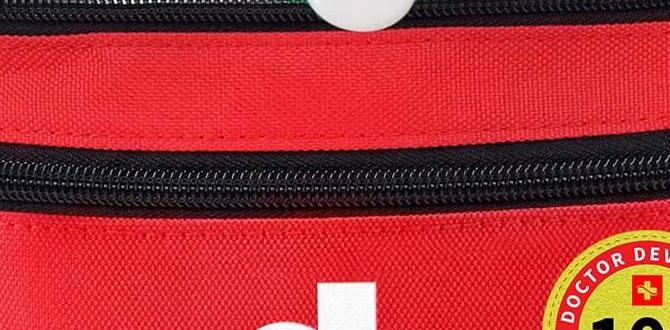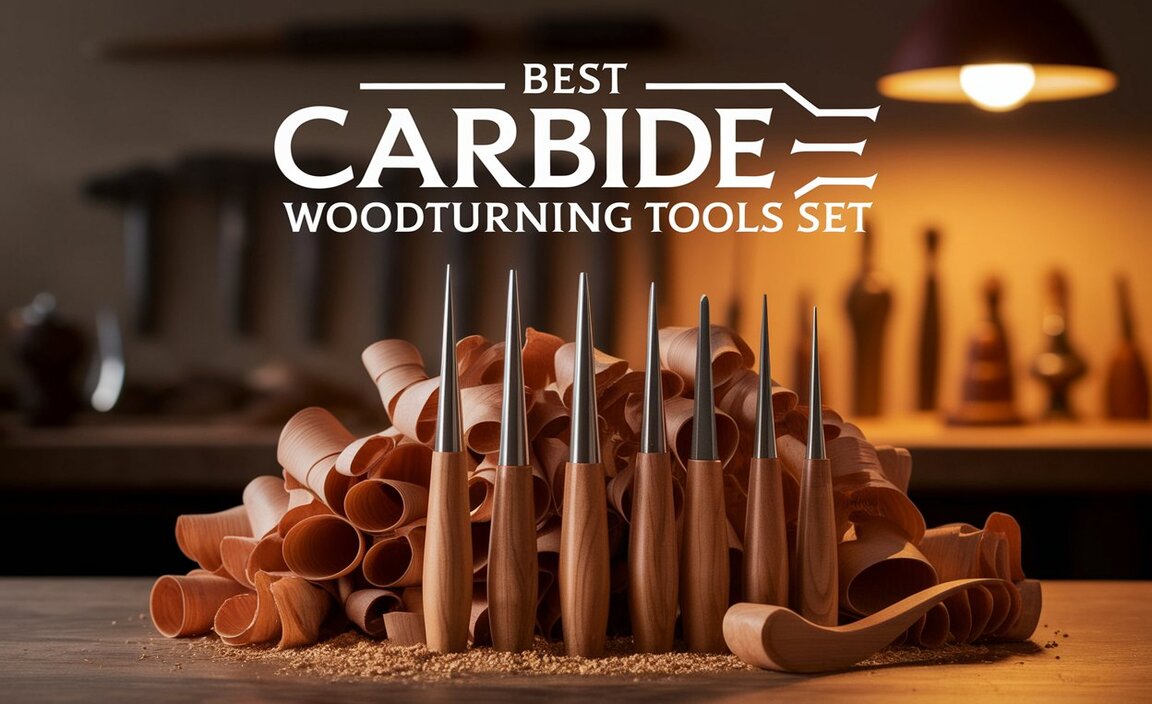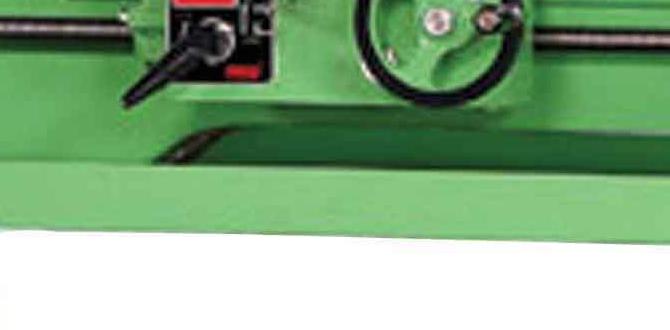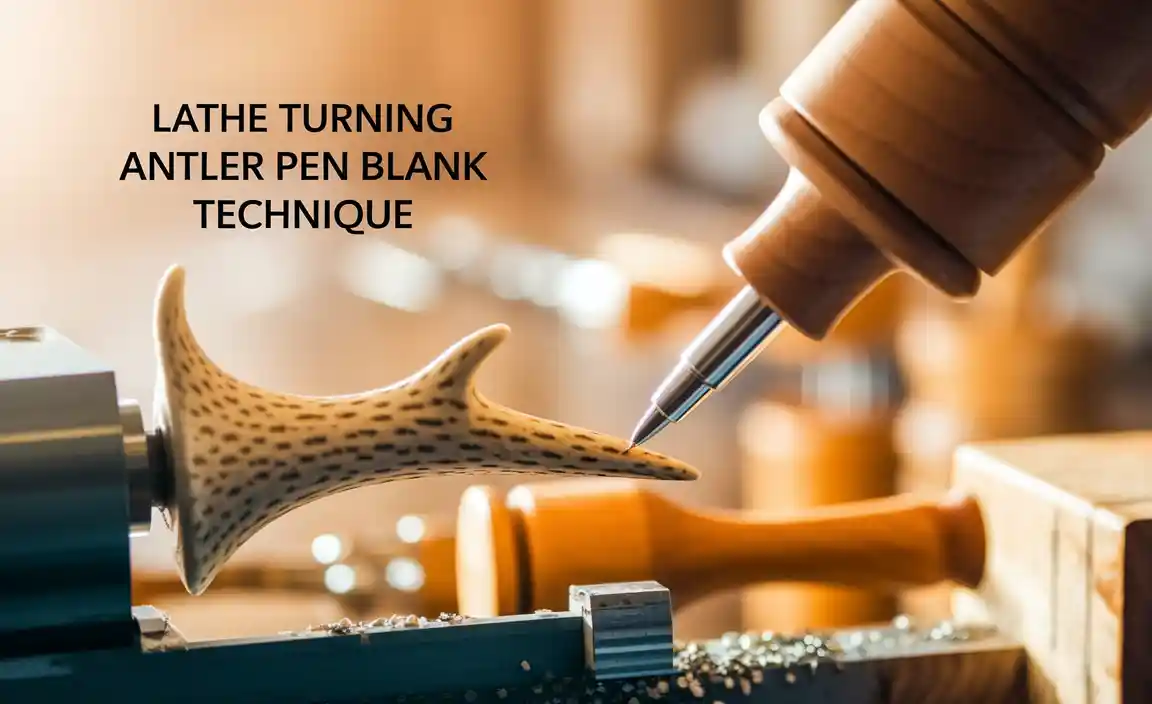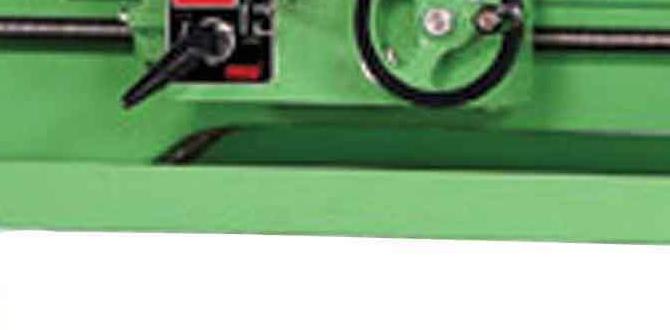Expanding mandrels for lathes are ingenious, versatile tools that grip workpieces internally, offering precise and secure holding for turning operations. They solve common chucking problems, especially for thin-walled or irregularly shaped parts, making them essential for accurate results on any lathe.
Hey everyone, Daniel Bates here from Lathe Hub! Turning on a lathe is awesome, but holding your workpiece securely and accurately can sometimes be a real head-scratcher. We’ve all been there, right? Trying to get a perfect finish on a thin tube or a delicate ring and worrying if your chuck is going to mar the surface or hold it true. It’s frustrating when your setup makes you second-guess your entire project. Well, I’ve got some good news! Today, we’re diving into a tool that’s often overlooked but is an absolute game-changer for so many turning tasks: the expanding mandrel. We’ll break down exactly what they are, why you absolutely need one (or maybe a few!), and how to use them safely and effectively. Get ready to unlock some new precision in your workshop!
What Exactly is an Expanding Mandrel for a Lathe?
Think of an expanding mandrel as a super-smart internal chuck. Instead of gripping the outside of your workpiece like a traditional three-jaw or four-jaw chuck, a mandrel grips from the inside. It’s designed to expand slightly once inserted into a bore, creating a tight, friction-fit hold on your part. This is incredibly useful when you need to ensure the outside surface of your workpiece remains completely untouched or when you’re working with materials that are easily damaged.
The basic concept involves a tapered shaft and an expandable sleeve. When you tighten a nut or screw, it pushes the sleeve up or down the taper, forcing it to expand outwards against the inside diameter of your workpiece. Conversely, loosening it allows the sleeve to retract, releasing the grip. This simple mechanical action is what makes them so reliable and effective for precision work.
Why Are Expanding Mandrels So Genius?
The “genius” of expanding mandrels lies in their ability to solve problems that other workholding methods struggle with:
- Preserves Surface Finish: They grip internally, meaning the external surfaces of your workpiece are completely free from jaw marks or the pressure of external chucks. This is crucial for decorative items, thin-walled tubes, or parts requiring a pristine outer finish.
- Handles Delicate or Thin-Walled Parts: Traditional chucks can crush or distort thin-walled tubes or delicate items. Mandrels distribute holding pressure evenly along the bore, minimizing the risk of damage.
- Achieves High Accuracy: When properly selected and used, mandrels can hold workpieces with exceptional concentricity and runout. This is key for achieving precise turning operations on the outside diameter.
- Versatility: They can hold a wide range of diameters with just a few mandrels, thanks to their expanding nature.
- Easy to Use: Once you understand the principle, using an expanding mandrel is straightforward and much faster than setting up complex clamping arrangements.
Types of Expanding Mandrels
While the core principle remains the same, expanding mandrels come in a few variations to suit different needs and applications within the lathe world. Understanding these differences will help you choose the right one for your specific tasks.
Dovetail Style Mandrels
These are perhaps the most common type you’ll encounter, especially for metalworking applications. They feature a tapered body with “dovetail” sections that expand outwards. As you tighten the drawbar or screw, these sections are forced against the internal bore of your workpiece.
Pros:
- Excellent gripping power.
- Suitable for medium to heavy-duty turning.
- Good for holding tubes and rings.
Cons:
- Can leave slight marks on the bore due to the expansion points.
- Requires a bore with sufficient depth to engage the segments.
Collet Style Mandrels
Similar to collets used in milling machines, these mandrels use a split sleeve that contracts or expands. These are often used for holding smaller diameter parts or when a very fine, uniform grip is needed. They are sometimes integrated into specialized chucks or fixtures.
Pros:
- Gentle and uniform grip.
- Ideal for smaller diameter workpieces.
- Can provide very high concentricity.
Cons:
- Generally have a smaller expansion range per collet.
- Might not be suitable for very heavy cuts.
Screw-Type Mandrels (or Expanding Arbor)
These mandrels typically feature a threaded shaft. You screw the workpiece onto the mandrel, and as you continue to tighten, a nut or collar is forced up a taper, expanding a sleeve or segments to grip the inside of the workpiece. They provide a strong, positive grip.
Pros:
- Very strong and secure hold.
- Can be good for parts that are machined from solid bar stock, where the bore is pre-machined.
Cons:
- Requires a threaded hole or a bore that can accommodate the screw mechanism.
- Can be slower to load and unload compared to other types.
Live Mandrels
A live mandrel rotates with the lathe spindle, meaning it has its own bearing. This is a more advanced setup but offers superior accuracy and reduced wear for high-speed or long-duration turning operations. The expanding mechanism is still driven by a taper or screw, but the entire assembly spins with the part.
Pros:
- Maintains accuracy at higher speeds.
- Reduces wear on the mandrel and workpiece bore.
Cons:
- More complex and expensive.
- Typically require a more specialized setup.
When Should You Use an Expanding Mandrel?
Expanding mandrels are not a one-size-fits-all solution, but they shine in specific scenarios where other workholding methods fall short. Here are key situations where you’ll want to reach for an expanding mandrel:
- Machining the Outside of Thin-Walled Tubes: This is the classic use case. Whether you’re turning down the outside diameter of a brass tube, an aluminum pipe, or a steel sleeve, a mandrel prevents you from crushing it.
- Finishing the Outer Surface of Rings: For jewelry making, decorative components, or precision gears, you need to turn the outside precisely without marring it. A mandrel is perfect for holding rings or bushings.
- Working with Fragile Materials: If you’re turning parts from materials that are brittle or easily deformed, like certain plastics, graphite, or even delicate castings, the internal, distributed grip of a mandrel is invaluable.
- Ensuring Maximum Concentricity: When the inner bore is already precisely machined, using a mandrel that expands from that bore ensures your outer turning operations are referenced perfectly against it. This eliminates the runout that can occur when gripping externally.
- Holding Parts with Finished Inner Diameters: If you’ve already bored a part to a precise size and need to machine the outside, a mandrel is the ideal way to hold without damaging that critical inner surface.
- When Internal Gripping is the Only Option: Some very large or oddly shaped external features might make external chucking impossible. In such cases, if there’s a suitable bore, an expanding mandrel becomes the only viable option.
For enthusiasts working with metal lathes, these are indispensable for projects like turning custom pipe fittings, making components for RC cars or drones, or replicating parts for restoring vintage machinery where original tolerances are critical.
Choosing the Right Expanding Mandrel Size
Selecting the correct mandrel is crucial for both safety and accuracy. Most expanding mandrels are designed to fit a specific range of bore diameters. This range is usually indicated by the manufacturer. Here’s how to approach it:
1. Measure Your Bore: Use a reliable bore gauge or precision calipers to accurately measure the inside diameter of the workpiece you intend to hold. Measure in a few different spots to ensure consistency.
2. Check the Mandrel’s Specifications: Mandrels are typically sold with a specified expansion range. For example, a mandrel might be listed as fitting bores from 1.000″ to 1.125″ (25.4mm to 28.57mm). You want your workpiece’s bore to fall comfortably within this range. It’s generally best if your bore is somewhere in the middle or upper-middle of the mandrel’s range for optimal gripping force, but not so tight that it’s difficult to insert.
3. Consider the Material of Your Workpiece: Very hard materials might require slightly more outward pressure, meaning you want to be well within the mandrel’s effective range. Softer materials, or those prone to deformation, might benefit from having the bore towards the lower end of the mandrel’s range, requiring less expansion force.
4. Think About Depth of Engagement: Ensure the mandrel’s expansion segments will have enough depth within your workpiece’s bore to provide adequate support. A workpiece that is too shallow might not provide enough surface area for the mandrel to grip effectively.
Here’s a table to illustrate typical size ranges and considerations:
| Mandrel Type/Item | Typical Bore Range Diameter (Inches) | Typical Bore Range Diameter (Millimeters) | Notes & Applications |
|---|---|---|---|
| Small Expanding Mandrel | 0.5″ – 1.0″ | 12.7mm – 25.4mm | Jewelry, small bushings, delicate parts. Good for wood AND metal lathes. |
| Medium Expanding Mandrel | 1.0″ – 2.0″ | 25.4mm – 50.8mm | General-purpose for tubes, rings, sleeves. Excellent for metalworking. |
| Large Expanding Mandrel | 2.0″ – 4.0″ | 50.8mm – 101.6mm | Larger diameter tubes, housings, custom fittings. Needs good lathe power. |
| Dovetail Mandrel | Varies widely (e.g., 0.75″ – 3.0″) | Varies widely (e.g., 19mm – 76mm) | Strong grip, common in metal shops. May leave marks on the bore. |
Always refer to the manufacturer’s specifications for precise sizing. Websites like Grainger or Machinery Lubricants can provide detailed product information and specifications for various types of expanding mandrels.
How to Use an Expanding Mandrel Safely on Your Lathe
Safety and proper technique are paramount when using any lathe accessory. Expanding mandrels are no different. Follow these steps to ensure a secure setup and safe operation.
Step-by-Step Guide to Using an Expanding Mandrel
- Prepare Your Workpiece: Ensure the inside bore of your workpiece is clean and free of debris or burrs. Any obstructions can prevent the mandrel from seating properly or cause uneven expansion. If necessary, lightly deburr the edge of the bore.
- Select the Correct Mandrel: Based on your workpiece’s bore diameter, choose an expanding mandrel that has an appropriate expansion range. Ensure the bore falls within the mandrel’s specified operating limits.
- Insert the Mandrel into the Workpiece: Gently insert the mandrel into the bore of your workpiece. For most types, the taper should be facing into the part. Don’t force it. If it’s a tight fit, ensure you’ve selected the correct mandrel and that the bore is clean.
- Mount the Mandrel/Workpiece Assembly to the Lathe: This is where the type of mandrel matters most.
- For Mandrels with a Drawbar/Screw: These often have a shank that can be held in a collet chuck, a milling chuck, or even a three-jaw chuck (though a collet is preferred for accuracy). Insert the shank into your chosen holding device on the lathe.
- For Mandrels with a Through-Hole for a Drawbar: Secure the workpiece onto the mandrel, then insert the entire assembly into the lathe. Connect the drawbar and pull it through the spindle (if your lathe allows) or use a drawbar mechanism at the back of the headstock.
- For Screw-Type Mandrels: These often have a Morse taper shank. Insert this directly into the tailstock spindle (for external turning) or the headstock spindle (for internal turning).
Always ensure the mounting method is secure and centered.
- Expand the Mandrel: This is the critical step.
- For screw-driven mandrels, tighten the adjustment screw or nut. You’ll feel resistance as the taper engages the expanding segments and pushes them outwards against the bore.
- For drawbar-driven mandrels, pull the drawbar evenly. This draws the mandrel taper into the expanding sleeve, forcing it outwards.
Tighten until the workpiece is held firmly. You should not be able to move the workpiece by hand. However, do not over-tighten, as this can damage the workpiece, the mandrel, or the lathe spindle/tailstock. A good rule of thumb is to expand it until it feels snug, then give it another quarter to half turn. Avoid excessive force.
- Check for Runout (if critical): If extremely high accuracy is required, you can indicate the outside of the workpiece with a dial indicator while it’s mounted. If there’s excessive runout, you might need to slightly adjust the mandrel or check the workpiece bore’s concentricity.
- Perform Your Machining Operation: Begin your turning, facing, or threading operations. Start with lighter cuts to ensure everything is stable, then gradually increase your depth of cut as you gain confidence in the setup. Watch for any signs of vibration or chatter, which might indicate the workpiece isn’t held securely enough or that your cut is too aggressive.
- Retract the Mandrel: Once your machining is complete, loosen the expansion mechanism.
- For screw-type mandrels, back off the screw or nut.
- For drawbar types, push the drawbar (or release the drawbar mechanism).
The mandrel should retract, releasing its grip. You may need to give it a gentle tap to break the friction hold if it’s very tight.
- Remove the Workpiece: Carefully slide the workpiece off the mandrel.
- Clean and Store: Clean both the mandrel and the workpiece. Store the mandrel properly to prevent damage and corrosion. A light coat of oil on metal mandrels is recommended.
Safety Precautions
Always prioritize safety. Here are some critical points:
- Wear Safety Glasses: Always wear approved safety glasses or a face shield when operating a lathe.
- Secure Fit is Key: Never use a mandrel that doesn’t fit the bore correctly or is at the extreme end of its expansion range. A loose workpiece is a dangerous projectile.
- Avoid Over-Expansion: Overtightening can damage the mandrel or the workpiece, and can even lock the mandrel so tightly it cannot be released.
- Check for Damage: Before each use, inspect the mandrel for any signs of wear, damage, or corrosion. A damaged mandrel can fail unexpectedly.
- Use Appropriate Cuts: Don’t try to take extremely heavy cuts with a mandrel, especially if you’re new to using one. Start conservatively.
- Workpiece Stability: If the workpiece feels loose at any point, stop the lathe immediately, retract the mandrel, and reassess.
For more on general lathe safety, the Occupational Safety and Health Administration (OSHA) provides excellent resources on machine tool safety standards, which are vital for any workshop environment.
Mandrels in Woodworking vs. Metalworking Lathes
While the principle of expanding mandrels is the same across different lathe disciplines, there are nuances in how they are typically used and what you might find:
Metalworking Lathes
Metal lathes often utilize expanding mandrels (particularly dovetailed or screw-type) for tasks like:
- Turning the outer diameter of precision

